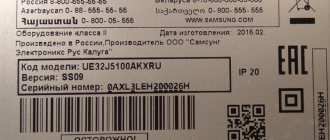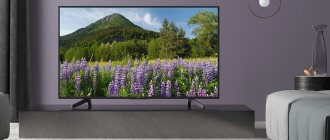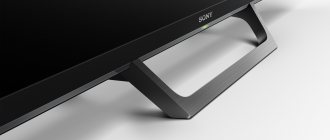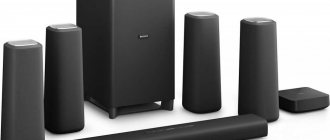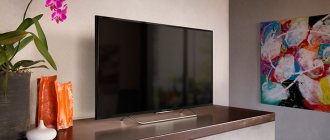We start by borrowing a sports term: “Form is temporary, but class is permanent.”
This applies to athletes all over the world. This is also true in other fields such as electronics.
Electronic brands may come and go, but brands like Sony are here to stay. Whenever we talk about quality, especially in the world of TVs, the first name that comes to your mind is SONY.
Since 1946 as the manufacturer of Japan's first tape recorder, Sony has certainly come a long way.
Right from the moment they entered the television market, the Sony brand has never compromised on quality. This is one company that has never been involved in price wars. They believe in providing quality as they believe that there are people who will never refuse to pay for quality products.
Therefore, we can safely say that SONY is a brand that you can buy with your eyes closed.
Let's take a look at some of the advanced technologies used by Sony in the television industry.
Which Sony TV is better to buy?
X-Reality Pro technology on Sony TVs
This is 4K technology. Today you will find many movies recorded in 4K. However, it was not the same in the old days. The same goes for your DVDs.
So the 4K you typically see on TVs today may simply not actually be 4K.
You already know that Sony never compromises on the quality aspect. Thus, they came up with the concept of X-Reality Pro, a powerful graphics engine that has the ability to convert normal broadcasts to 4K.
How do they do it?
X-Reality Pro is actually a smart processor.
Let's imagine watching in normal HD. How does X-Reality Pro convert this HD movie to 4K?
This engine goes through various images - increasing the reality of the image. And you'll have a final product that looks vibrant and colorful, but is still half the size it needs to be.
The CA8-4K chip continues to upscale normal HD images. They do this using a special 4K database and processing algorithm. This ensures that they optimize every pixel for 4K display. They include all kinds of images, ranging from landscapes to buildings and even faces.
This process includes three stages. Starting with image analysis, the process continues with noise reduction and finally ends with the creation of reality.
You can compare this process to work done by a professional artist to restore the painting to its original true beauty. This includes adding missing colors, shine, vibration and texture to images.
The result is an image with higher resolution and increased clarity. Of course, Sony has competition in this area as well.
Read: Review of Samsung QLED TVs in Russia
Samsung with its hyperreal engine, LG with its triple XD engine, and Panasonic with its excellent Remaster processor. All of these graphics engines have their own advantages, but research shows that Sony's X-Reality Pro is the best in image quality, with Samsung coming in second.
Triluminos display on Sony TVs
Every television production company has its own unique USP. As far as Sony is concerned, picture quality is all that matters. They coined a new term, Triluminos Display, a technology that increases color saturation on a display screen. The USP of this technology is that it reduces color fading, especially when you look at it at an angle or in direct sunlight.
This technology uses the principle of quantum dots, which are capable of emitting light at specific wavelengths. You get shades that are as close to reality as possible. The Triluminos display can produce outstanding shades of blue, green and red that other LED displays cannot do.
In technical terms, Triluminos is a kind of filter located between the white LED backlight and the display panel. This filter converts white light into RGB lighting, allowing Sony Triluminos displays to display a variety of colors.
Read: What is NanoCell technology? And which is better OLED and QLED
It's also worth looking at what competitors offer. LG OLED TVs and Samsung QLED TVs exhibit similar display qualities.
TV selection criteria
Diagonal
This characteristic significantly affects watching TV, because based on the dimensions, it is necessary to correctly select the distance to the place from where they will watch it. The parameter should exceed the screen diagonal by 3-5 times. If the device is needed for watching TV shows, then the optimal solution would be a model with a diagonal of 21 inches or more; copies from 29 inches are suitable for watching DVDs; copies over 32 inches are suitable for home cinema.
Choose the diagonal depending on the size of the room
Important! There is no need to overpay a certain amount for the size of the TV. If the area of the room is small, it is better to buy a small device that will succinctly fit into the interior of the room.
Brightness and Contrast
At the moment, it is Sony that produces equipment with the best image quality. This takes into account the best ratio of brightness and contrast. Initially, it was believed that the contrast ratio in plasma units was better than in LCD, but after the advent of LED and OLED displays, the situation changed significantly. To choose the most suitable option, you should check these two characteristics in the store on nearby copies and compare them.
Sony produces equipment with the best image quality
Permission
If technology is necessary for watching DVDs, then a resolution of 600p in the horizontal direction is quite sufficient. To watch high-definition video, you should choose a device with a resolution of 720 pixels or more; for Full HD image quality, 1080p would be the ideal solution.
Screen resolution
Dimensions
When choosing a TV, you should also consider parameters such as screen aspect ratio. The standard parameters are 4:3 - the best solution for broadcasting TV shows. The 16:9 aspect ratio perfectly conveys all the bright colors and clarity of pictures of wide-screen broadcasts and exciting films. It is this relationship between the parties that is most often found in the equipment of this manufacturer. Small TVs are suitable for small rooms and kitchens, while large devices are provided for large rooms.
Aspect ratios of different screen formats
Screen shape
Most models have a rectangular shape, but Sony has developed innovative technology with a curved screen. This display most accurately conveys image clarity and makes colors brighter and more saturated.
Healthy! When choosing, you should pay attention to the ease of use of the model. The menu should be divided into logical items so that the functionality of the device is easily perceived. One of the important factors is the comfortable holding of the remote control in your hand so that the buttons can be pressed clearly.
What operating system is on Sony TVs?
You have smartphones and hence it is not surprising that you have smart TVs.
LG has WebOS, while Samsung has its SmartHub OS. Sony has been introducing Android OS in its smart TVs since 2015.
Android is the most widely used OS in smartphones around the world. Naturally, the iPhone is an exception. People have worked on Android OS at some point in their lives. Hence, working with Android OS is never a problem for anyone.
At the very beginning, starting the Android operating system is one of the easiest things to do. Simply pressing the Home button on your remote control can do the job for you. The Recommendations Shelf features a neatly ordered list based on your preferences. It gives details of the programs available to you, as well as what you would like to watch.
The bold fonts and menu displays are attractive. However, there is still room for improvement as they don't go beyond linking the Watch TV icon to TV tuners. It must be said that competitors have no less smart, if not better, options for accessing the Internet.
Read: 8K TVs - everything you need to know
The main advantage of Android OS is that it is extremely user-friendly. Plus, you have access to constant updates. Google is always looking to improve its technology.
It certainly may not be the best OS available on the market, but it does offer value for money. All Sony TVs may not have Android OS, but they still earn the right to be called smart TVs.
LG OLED TVs
The OLED marking looks like this OLED55B8S. It is noticeably different from regular 4K TVs, but there are similarities.
- OLED - screen type;
- 55 - diagonal;
- B - series, the further the letter is to the end of the alphabet, the better the model;
- 8 - year of manufacture: 8 corresponds to 2021, 9 - 2021;
Photo: Depositphotos
Samsung also has separate labeling systems for TVs with different screens. Regular LED models are marked as follows: UE50RU7400.
- U — screen type, LED;
- E - model for the European market (including for the Russian Federation);
- 50 - diagonal;
- R - years of manufacture: R corresponds to 2021, N - 2021
- U - Ultra HD, that is, 4K;
- 7400 is a series, the higher this number the better.
High dynamic range (HDR) on Sony TVs
Any discussion about high-end TVs without involving HDR is unthinkable. What exactly is the concept of HDR? Let's take a quick look at this concept.
Brightness is one aspect of a TV. Contrast is more important because it allows you to get into detail in each image. The layman's definition of television contrast is the difference between how dark and how bright a display can appear.
Dynamic range describes the difference and detail it can show between the two.
HDR goes deeper into this process and highlights the differences between the darkest blacks and the brightest whites. Automatically, it offers a large range of colors in between. This may result in improved image quality. You won't find this kind of differentiation in conventional LED TVs, which operate on the standard dynamic range (SDR) principle.
Sony 4K HDR TVs can provide a richer, brighter display than regular LED/LCD TVs. You'll be able to better appreciate dark shadow areas and sunlight areas on the screen. This is very noticeable in televised sports and other live events.
Read: What is HDR video technology?
HDR allows you to capture greater detail from black and dark areas of the display screen. Watching horror movies on Sony 4K HDR TVs can be frightening due to the intricate detail the TV display can capture.
Tips for choosing
- The ranking of the best Sony TV models includes a wide range of durable and reliable equipment that impresses with its high image quality and its enormous functionality.
- When purchasing a unit from a popular manufacturer, you need to pay special attention to the technical characteristics. The entire model range conveys the depth of colors, saturation and brightness of the video.
- Most copies have their own characteristics, among which is the built-in Smart TV on the Android platform.
- Sony TVs with tuners allow you to catch satellite and digital broadcasts without much effort.
- Modern units are controlled by smartphones and voice notifications, which simplifies the user manual.
Watch the video about Sony Android TV
What refresh rate to choose on Sony TVs
You must have heard the words “refresh rate” whenever you are looking to purchase a TV. You must have seen numbers like 50Hz or 60Hz mentioned in the specifications.
What is refresh rate? This is nothing more than the number of frames that the TV can update in one second. Naturally, the higher the number, the better it will be for viewing.
Sony has re-tested this concept of refresh rate as motion flow rate. Other manufacturers such as Samsung and LG have clear concepts of motion speed and TruMotion motion speed, respectively.
Sony is pioneering the world's first quadruple refresh rate, which has the ability to convert up to 200 frames per second.
What does this mean?
Sony's motion flow speed concept involves inserting three new transition images from the incoming signal into the original image, resulting in faster display speed and clarity, resulting in sharper images. You will especially appreciate this technology when watching your favorite sports programs.
Manufacturers do tend to increase their upgrade rates by advertising their products. These are marketing gimmicks, but even 50Hz is a good refresh rate.
How to find out your TV model
Good day!
Recently, questions regarding TV have become more frequent (perhaps this is due to the rapid transition to digital).
And one of the fairly popular “problems” is related to determining the exact model and series of the TV. By the way, this can help not only to find out support for the DVB-T2 format, but also:
- to find the original remote control;
- to download new firmware (and this can provide new opportunities and eliminate a number of glitches);
- to call a technician (in case of device breakdown);
- to receive technical TV specifications (to find out/clarify its capabilities).
In general, below I will present several methods that I have used more than once myself (by the way, they are relevant for different device models: Samsung, LG, Philips, etc.).
Comparison of Sony TVs with its main competitors
Sony adheres to the strictest quality standards at all times. This is an inherent quality of Sony. In fact, all Japanese products such as Sony, Mitsubishi, etc. known for their quality control measures. There are no half measures as far as Sony is concerned.
Read: 4K TV - 55 inches: Which one is better to choose and buy?
Thus, the brand has maintained its prime position as one of the leading manufacturers of electronic products, especially televisions, in the world. Sony never compromises on cost. They have customers willing to pay the price to ensure the highest quality standards.
The picture quality of Sony TVs is currently leading, closely followed by competitors such as Samsung QLED. If you compare the user interface of smart TVs, the LG brand should win. However, Sony with its Android operating system is also very popular due to the availability of more applications.
Series
Next in the designation is the model series. Like many manufacturers, the series number includes a set of technological functions. To indicate serial characteristics, as well as sets of functions, the manufacturing company uses a digital value from 4 to 9. It is easy to guess that the hierarchy applies to the highest digit, and the higher the value, the more technologically advanced the model. Today, the number 9 denotes OLED TV models.
But it is not a fact that every year the highest value will apply to one type of display, since the world of technology does not stand still. The order is maintained only to indicate the older model, as a sign of superiority. After the series designation there is a subseries. The distinctive aspects between the markings of a particular series are insignificant, which only the manufacturing company understands. Following podcast, a third meaning is used to distinguish television receiver design. The color in the markings is indicated by the following meanings:
- B – black;
- S – silver;
- W – white.
Advantages and disadvantages of Sony TVs
You should always have an idea about the pros and cons of Sony TVs, especially when you are looking to purchase one. Let's look at the positive features before listing the negatives.
1. When it comes to picture quality, overall appeal and quality of output, Sony is the right choice. This is one of the biggest advantages of Japanese products. They never compromise on quality aspect.
2. Sony's motion flow concept is smart, all things considered.
3. The Android operating system may be sluggish compared to LG's WebOS, but is nonetheless popular due to its ease of use and greater app accessibility.
Marking abroad
In America and Europe, starting from 2013, the marking can be deciphered as follows:
- At the very beginning it is indicated how many inches the screen diagonal is;
- After this, the class is indicated, which is designated in the same way as in televisions released in 2021 and intended for Russia and the CIS countries;
- After this there are four digits, the first two of which are responsible for the series and model of the device, and the last two for the features of its design;
- At the end, the letter A, B, C or D is indicated, which is responsible for the year of manufacture.
Thus, if you have a device that was brought from abroad, you will be able to determine its main characteristics by the markings indicated on it.
Best mid-range Sony TV
Model: Sony KDL
You have three options, 32 inch, 40 inch and 48.5 inch TV in this model. Let's take a look at the excellent qualities of this mid-range TV.
32 inch -KDL-32W653A
40 inch :KDL-40R353C
48.5-inch: KD-49XE8096
- Triluminos display
- X-Reality PRO engine.
- Excellent viewing angle.
- Bass subwoofer
- Slim design
- Enjoy YouTube and Netflix instantly as your Sony TV is compatible with both.
- X-Protection Pro
- USB and HDMI ports
- Screen mirroring function.
- Navigation in Russian.
Transcript example
In order to clearly demonstrate the decoding of the markings, we will consider several types of televisions. First, let's start with the 2015 model KDL 40W705CBR:
- KDL – values of a Sony TV receiver with Full HD resolution;
- 40 – screen diagonal;
- W – implies the TV group, the value W is the middle group;
- 7 – series value, as you can see the TV receiver is not a budget type;
- 0 – subseries, implies only minor changes from the production model;
- 5 – design features;
- C – year of manufacture, TV 2015;
- B - black TV.
- R - television receiver assembled for Russia and the CIS.
Now let's look at a newer type of TV produced in 2021 called SONY KD55AF9BR2, and let's try to decipher it:
- KD - Sony TV designation
- 55 – screen diagonal value
- A – display type, indicates OLED technology
- F – age and year of manufacture 2018
- 9 – series, premium look
- B – black TV
- R – destination region of the TV receiver Russia and CIS
- 2 – made in Slovakia
Best Budget TV Sony
Model: KDL
Sony also has some great budget models. The best in this category is undoubtedly the KDL series, available in 3 screen sizes, 32-inch, 40-inch and 49-inch.
Here are some of the main and interesting features of this budget range TV.
32-inch : KDL-32RE303
40 inches: KDL-40RE353
49.5-inch: KDL-50WF665
- X-Reality Pro engine
- Built-in bass woofer
- The device is plug and play.
- This is a Netflix compatible TV.
- Play music and video clips using a USB connection.
- Multi-Russian language function.
- Screen mirroring function.
- X-Protection Pro function.
Appearance
Dimensions - 924x549x66 mm, weight - 7.7 kg. Simple, uncomplicated design. The screen is flat, with fairly wide frames of 1.5 cm around it. The back of the TV has a somewhat unusual angular shape in the form of a low pyramid. There are special channels for wires. This feature of the case may not give it a good appearance when mounted on a wall. Although a standard 200x200 mm mount is provided for this.
The stand is light, attractive in appearance, weighing 0.4 kg, and only 21 cm deep, significantly refreshing the design. It has hollow legs for laying cables in them. With the stand, the dimensions are 924x589x212 mm. The Sony KD-43XF7005 is distinguished not only by its large dimensions (970x630x279 mm), but also by its significant weight - 10.4 kg.
How to find out the exact model of your TV
When contacting a service center or purchasing additional devices, it may be very important to know the exact model of your TV. On the back wall of each device there is a so-called “nameplate” - a plate with information about the technical characteristics of the device. However, the nameplate may be damaged or torn off. Also, sometimes it cannot be seen due to the fact that the TV case was tightly fixed to the wall. In this case, you will have to find the necessary information in another way.
- Finding the information you need through the menu
- Samsung (Samsung)
- LG (ElG)
- Philips
- How to decipher the code
How to find out the exact model of your TV
When using a TV, the question often arises of how to find out its exact model, series or year of manufacture. This information may be needed when ordering parts, contacting a service center, as well as when purchasing any additional modules, for example, digital set-top boxes or media players. Full information is indicated on the nameplate marked “Model” or “Model”. In some situations it is missing, or the panel may be fixed to the wall with brackets. Solving the problem in such a situation is quite simple - the markings can be viewed through the menu of the device itself.
How can you determine the model of a TV receiver?
If the TV is on the bedside table, it is very easy to find out its model and serial number. To do this, just unfold the device and look at the nameplate (information plate) - the necessary data is contained in the “Model” or “Model” line.
But if the TV receiver is attached to the wall with a fixed bracket without the ability to rotate the device, or the data on the information plate is damaged (unreadable), you can find the model in the TV panel menu.
Determining the TV model
Method 1: sticker on the back of the TV
This is perhaps one of the simplest, most reliable and fastest ways to find out the model of a device (even if it is broken or does not turn on). Please note that you should look for such a sticker on the back wall of the TV, not far from the various ports: HDMI, USB, etc.
My example shows what it looks like for model 32LJ500V-ZB.
Sticker on the back wall of LG TV
By the way, if the sticker is difficult to reach (for example, if the TV is mounted on a bracket and hanging on the wall), you can take a photo of it with a smartphone, and then enlarge the photo and look at it.
Method 2: through the device menu
If the TV is turned on and working, then the TV model and series should be presented in the settings menu (provided that your device is new enough).
LG
1) First you need to open the settings (usually the Settings button on the remote control).
2) Next, you need to go to the “System Information / Software Version” menu.
System information - software version
3) Afterwards the screen will show:
- TV model and type;
- software version;
- support center phone number;
- home page (and other information).
TV model and type
Samsung
1) First, you also need to open the settings menu and go to the “Support/contact Samsung” subsection.
Contacting Samsung
2) In this information window you will see all the necessary information: software version, model code, QR code, etc.
Philips
When watching TV programs, press the buttons on the remote control in sequence: 123654 . Next, a “blue” menu will appear on the TV screen, the first line of which will indicate the device model.
Method 3: using QR code
New monitors and TVs of 2021 are now often equipped with a QR code, which you can instantly read on your smartphone and find out not only the device model, but also immediately receive a link to the official support website.
QR code on the device body
Method 4: tech. documentation
If you still have those. documentation or operating instructions (these things are always included with the TV) - they almost certainly contain information about the model. One example is shown in the photo below.
Instructions for Panasonic TV
Method 5: sticker on the TV box
On the box for TV (as well as for monitors, laptops, etc.) you can usually also find stickers and information windows from those. characteristics of the device.
True, the method is not very reliable, because... Almost no one keeps large boxes at home.

